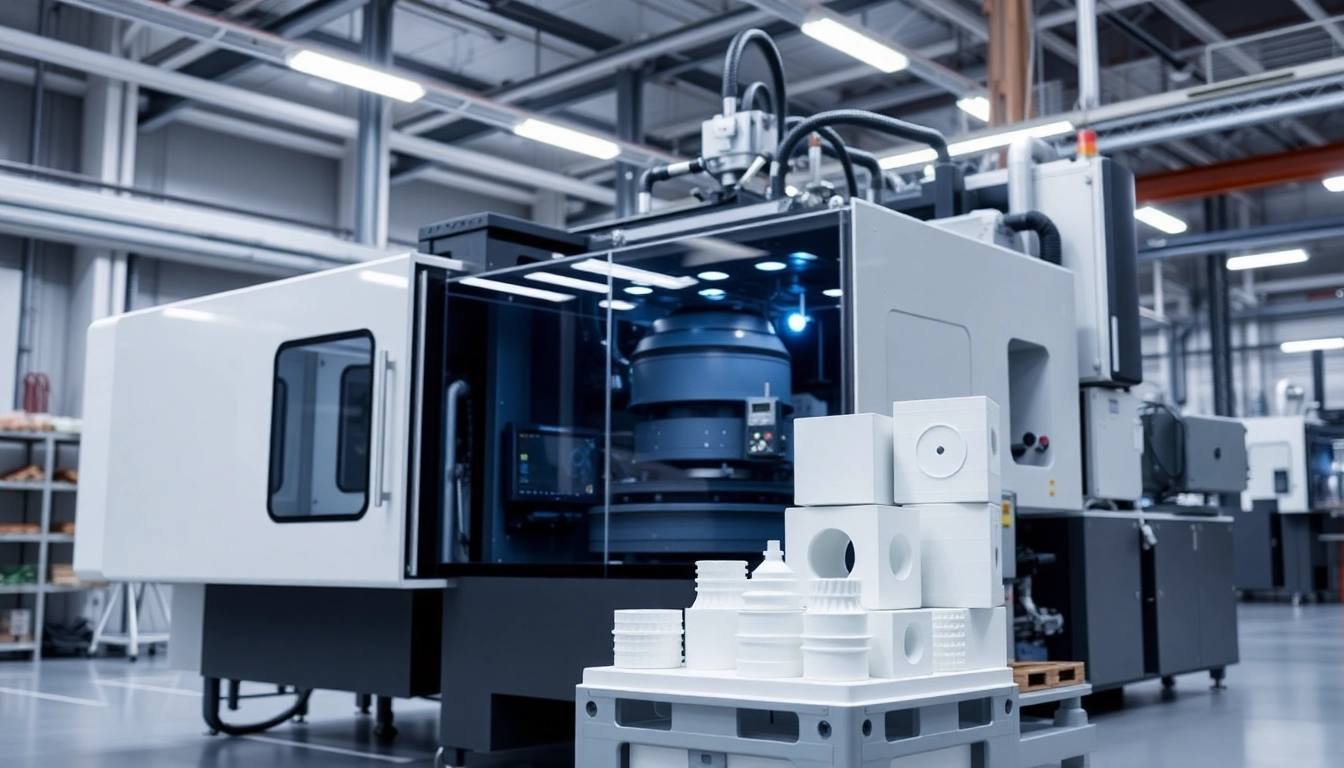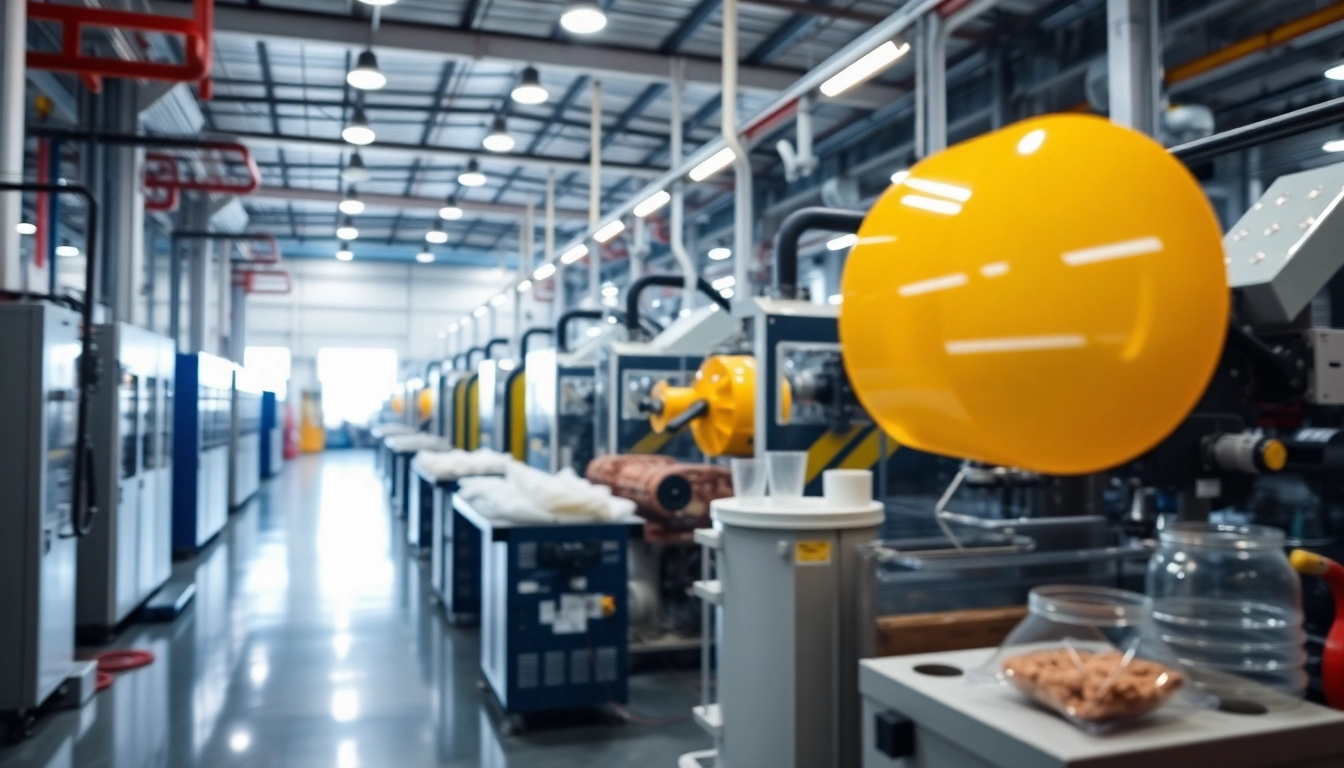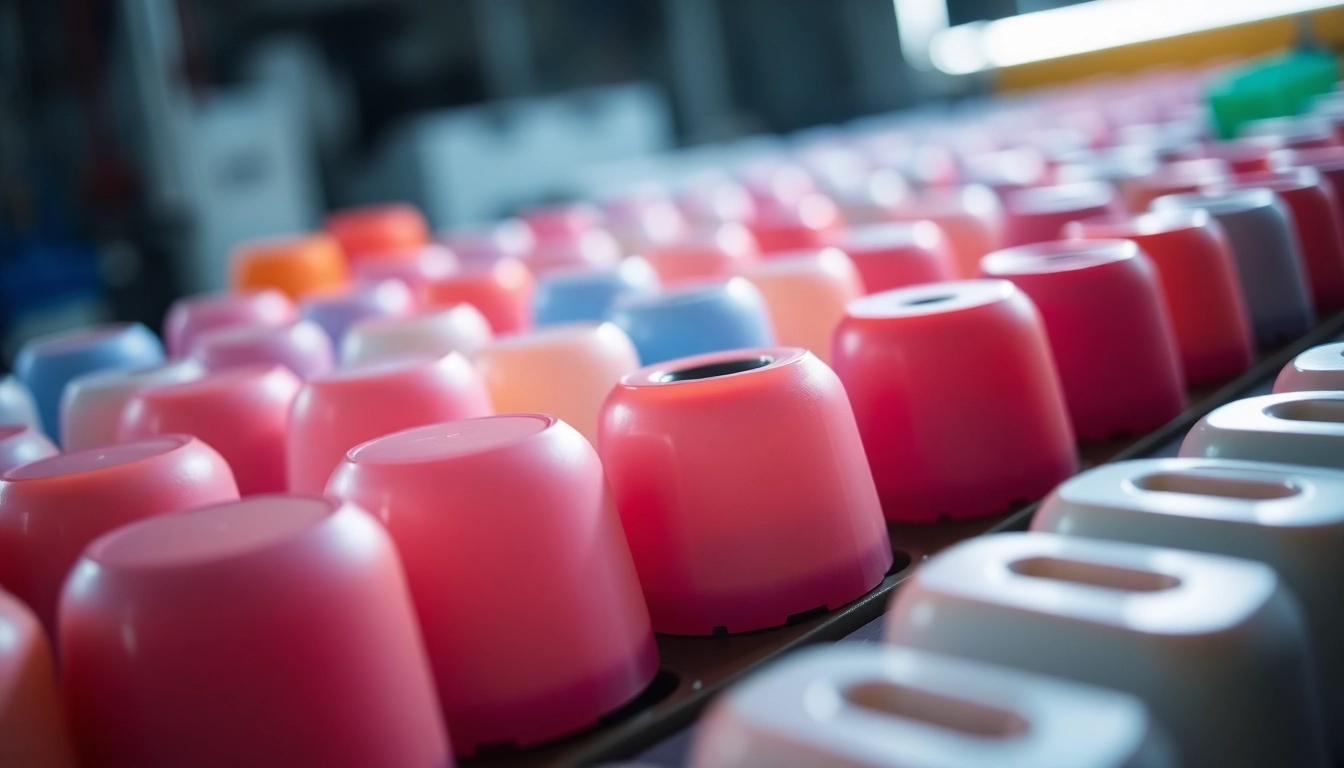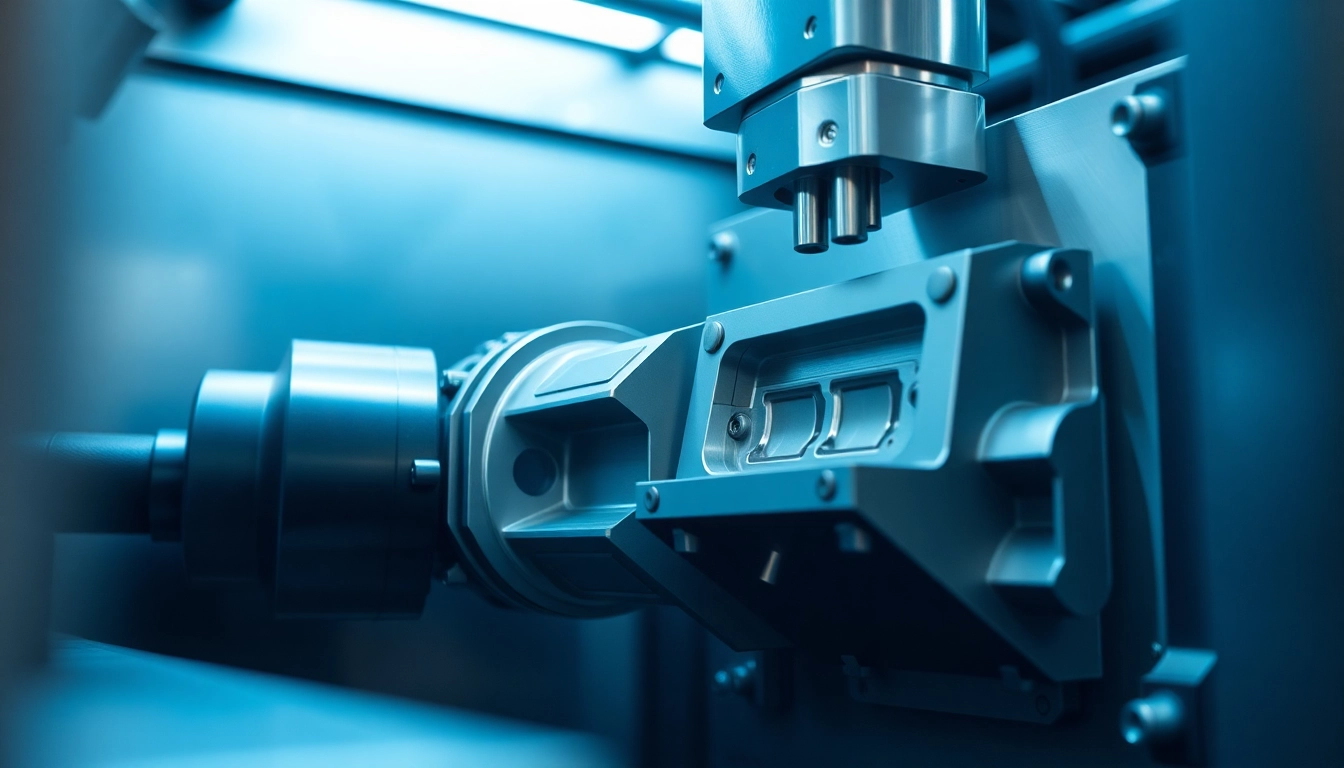Understanding Injection Molded Parts
What Are Injection Molded Parts?
Injection molded parts are components manufactured through the injection molding process, a popular technique used primarily for producing plastic items. This manufacturing process involves injecting molten material into a mold to form intricate parts used in various applications. From automotive components to household items, injection molded parts are characterized by their high precision and repeatability. The process enables the creation of complex shapes and features that are difficult to produce using other methods, thus making it an essential technology in modern manufacturing.
Benefits of Injection Molding
Injection molding offers numerous advantages for producing parts across various industries. Some of the key benefits include:
- Cost Efficiency: Once the molds are created, the production of parts becomes highly cost-effective, especially for large quantities.
- Speed: The injection molding process is fast, allowing for rapid production cycles and reducing lead times.
- High Precision: Injection molding provides excellent dimensional accuracy and surface finish, ensuring that parts meet exact specifications.
- Material Versatility: A wide range of materials, including thermoplastics and thermosetting plastics, can be used, thus allowing businesses to select materials based on specific characteristics needed for their products.
- Low Waste: The process is designed to minimize waste as excess material can often be reprocessed and reused.
With these benefits, it’s no surprise that injection molded parts are a preferred choice in many sectors, driving innovation and efficiency.
Common Materials Used in Injection Molding
There is a vast array of materials available for injection molding, each chosen based on the part’s performance requirements. The most common materials include:
- Polypropylene (PP): Lightweight, flexible, and resistant to chemicals, making it ideal for containers and automotive parts.
- Polyethylene (PE): Known for its durability and flexibility, commonly used for plastic bags and bottles.
- ABS (Acrylonitrile Butadiene Styrene): Strong and impact-resistant, often used for consumer goods, electronic housings, and automotive interiors.
- Polycarbonate (PC): Offers high impact resistance and optical clarity, commonly used for eyewear lenses and safety equipment.
- Nylon: Renowned for its strength and durability, making it suitable for applications like industrial parts and machinery components.
Designing for Injection Molding
Key Design Principles for Injection Molded Parts
Successful injection molding begins with effective design. There are several principles that designers should consider to ensure manufacturability and product quality:
- Simplicity: Design components to be as straightforward as possible while still fulfilling functionality.
- Uniform Wall Thickness: Consistent wall thickness helps prevent issues like warping and shrinkage.
- Minimizing Features: Features such as deep pockets or undercuts can complicate the mold design, so it is best to minimize or eliminate them if feasible.
- Consideration for Draft Angles: Incorporating proper draft angles can aid in the easy removal of parts from the mold, reducing wear on the tool.
Draft Angles and Wall Thickness
Draft angles are essential for ease of part extraction from the mold. Typically, a draft angle of 1-2 degrees is recommended to facilitate this process. Additionally, wall thickness should ideally be kept uniform to avoid issues during cooling, which can lead to deformation or defects in the part. A common practice is to maintain a standard thickness of between 1.5mm to 3mm in plastic injection molded parts.
Common Design Mistakes to Avoid
Designers should be aware of potential pitfalls during the design phase that may lead to complications or increased costs:
- Ignoring Tolerances: Tight tolerances can complicate manufacturing and increase costs, so ensure they are realistic.
- Overly Complex Geometries: While complexity can add value, it can also increase production costs and difficulties in mold making.
- Neglecting Ejection Mechanisms: Failing to consider how parts will be ejected from the mold can lead to design failures.
Process of Injection Molding
Overview of the Injection Molding Cycle
The injection molding process consists of several key stages:
- Clamping: The mold is securely closed to prepare for injection.
- Injection: Molten plastic is injected into the mold cavity through the nozzle.
- Cooling: The material cools and solidifies within the mold.
- Ejection: The mold opens, and the finished part is ejected.
This cycle can take anywhere from a few seconds to minutes, depending on the size and complexity of the part being produced.
Injection Molding Machines: Types and Functions
Injection molding machines are specialized equipment used to carry out the injection molding process. There are several types:
- Hydraulic Machines: Utilize hydraulic force for injection and are known for their reliability and strength.
- Electric Machines: Require less energy, offer precision movements, and have lower maintenance costs.
- Hybrid Machines: Combine hydraulic and electrical systems to leverage the benefits of both technologies.
Quality Control in Injection Molded Parts Production
Quality control is paramount in the injection molding process to ensure that parts meet specifications and industry standards. Techniques for maintaining quality include:
- Regular Inspections: Conducting routine checks on parts and molds to detect and address issues promptly.
- Statistical Process Control (SPC): Using statistical methods to monitor and control production processes, ensuring consistent product quality.
- Material Testing: Testing materials for characteristics such as strength, flexibility, and durability before use in production.
Applications of Injection Molded Parts
Industries That Use Injection Molded Parts
Injection molded parts are utilized across a diverse set of industries, including:
- Automotive: Production of components like dashboards, bumpers, and housings for lights.
- Consumer Electronics: Manufacturing cases for phones, computers, and other devices.
- Medical Devices: Creation of components such as syringes, surgical instruments, and casings for diagnostic equipment.
- Packaging: Production of containers, lids, and other packaging products.
- Household Goods: Items like kitchen utensils, toys, and storage containers.
Innovative Uses of Injection Molded Parts
Innovative applications of injection molded parts continue to emerge, helping to drive advancements in design and functionality. For example:
- 3D Printing Integrations: Combining traditional molding with 3D printing for custom inserts or designs.
- Smart Packaging: Development of injection molded smart containers that integrate sensors for tracking freshness or inventory.
- Biodegradable Materials: Utilizing sustainable materials for producing eco-friendly products.
Case Studies: Successful Injection Molding Projects
Several successful projects exemplify the capabilities of injection molding:
- Automotive Interior Components: A leading automotive manufacturer utilized injection molding to create lightweight interior parts, significantly reducing vehicle weight and improving fuel efficiency.
- Medical Device Innovations: A biotech company developed custom syringes using injection molding technology, allowing for precise dosing and user-friendly designs, greatly enhancing patient care.
- Consumer Products: A prominent toy manufacturer adopted injection molding for producing consistent, high-quality toy components that promote safety while appealing to young consumers with vibrant colors and intricate designs.
Future Trends in Injection Molding
Advancements in Injection Molding Technology
The future of injection molding is shaped by itself through constant technological advancements that enhance efficiency and capabilities:
- Automation: Increasing levels of automation are expected to streamline processes and reduce human errors in the production of molded parts.
- Soft Robotics: Development of soft robotics that can accommodate delicate parts handling further enhances capabilities in manufacturing.
- AI and Machine Learning: Use of AI-driven analysis for optimizing designs and production processes, leading to enhanced efficiency and reduced costs.
Sustainability in Injection Molding Practices
As sustainability becomes increasingly important in manufacturing, the injection molding industry is responding:
- Recycling Initiatives: Many companies are incorporating recycled plastics into their processes, contributing to a circular economy.
- Reduced Energy Consumption: Innovations in machine technology aim to lower energy use during production, further minimizing the environmental footprint.
- Use of Renewable Resources: Growing interest in biodegradable materials leads to the exploration of alternatives for traditional plastics.
Market Outlook for Injection Molded Parts
The market for injection molded parts continues to expand. Projections indicate growth driven by increased demand in the automotive, consumer goods, and medical device sectors. With an increasing focus on sustainability, the integration of eco-friendly materials and processes will likely shape future developments. Industry players that leverage new technologies and practices can look forward to a competitive edge in the evolving landscape of injection molding.




